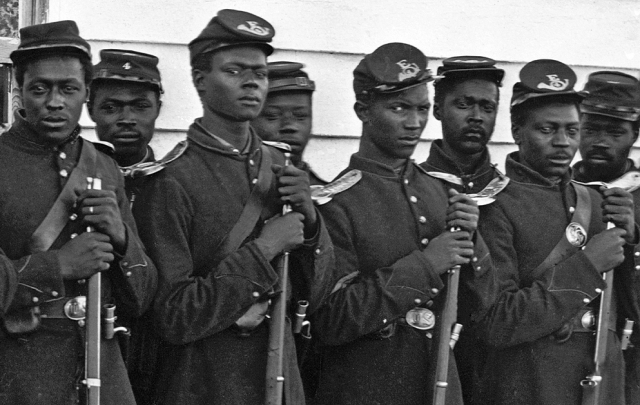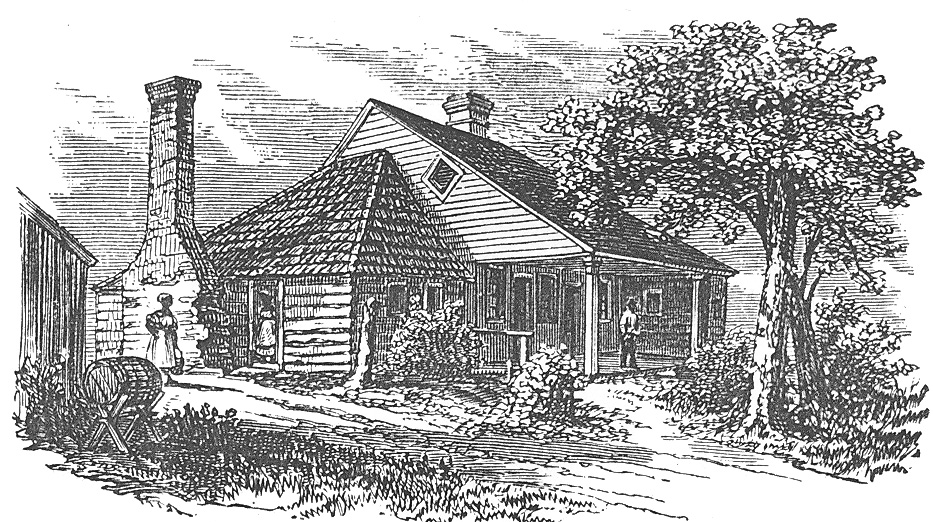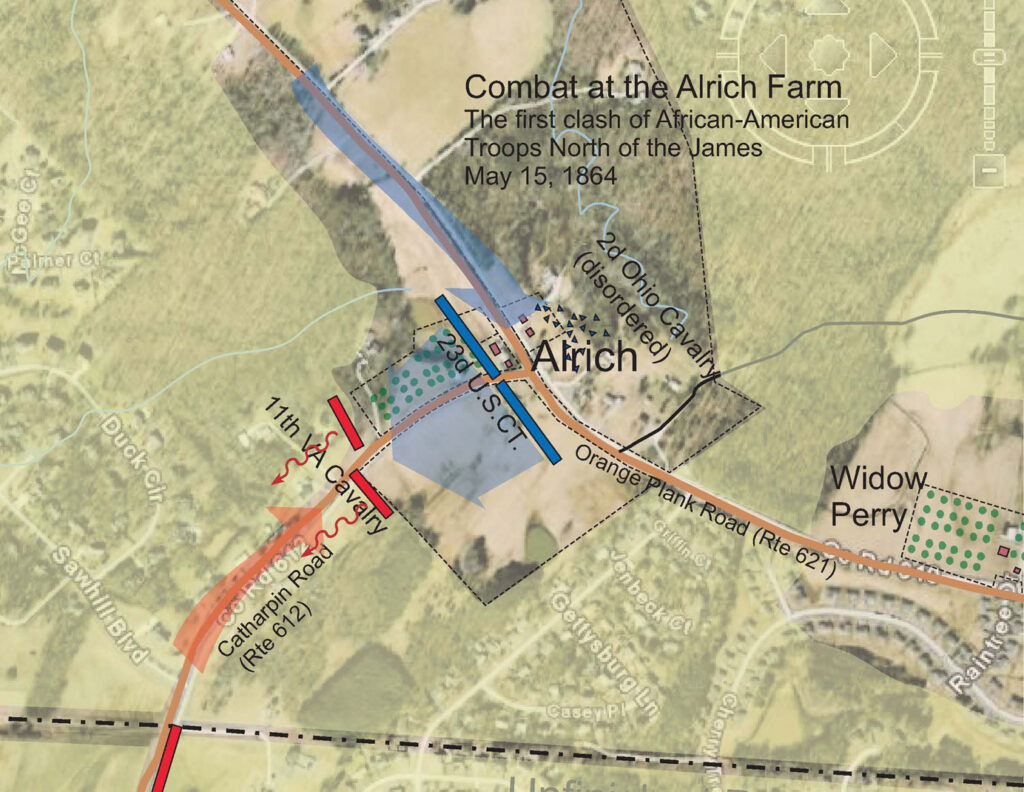
With CVBT’s latest property acquisition, we have a unique opportunity to make history. Since its founding almost thirty years ago, CVBT has not had a previous occasion to acquire a piece of land on which United States Colored Troops (USCT) fought. Until now!
We Need to Raise $100,000 to save this Rare Historic Battlefield!

That may not come as much of a surprise due to the fact that USCTs were not participating in active operations in the area until the spring of 1864, and even then, they saw very little combat in central Virginia due to the roles they were asked to perform. However, that changed on May 15, 1864, when unexpectedly, a USCT regiment received the call for action, and they answered.
In preparation for the Overland Campaign, the IX Corps—at that time an independent command—transferred from Annapolis, Maryland, to the central Virginia front. Commanded by Brig. Gen. Edward Ferrero, the Fourth Division of the IX Corps consisted of two brigades of USCTs. Once they arrived in the area, the IX Corps USCTs received orders to guard the Army of the Potomac’s supply wagon train against raids by Confederate cavalry and local guerrilla bands. It was unenviable but important work. Still, the USCTs longed for an opportunity to show what they could do in battle.
As the other divisions of the IX Corps fought at the Battle of the Wilderness and at Spotsylvania Court House during the first couple of weeks of May 1864, the USCTs continued to perform their logistical duties behind the lines. However, on May 15, 1864, while camping near the famous Chancellorsville crossroads, they received orders to meet a sudden threat.
Earlier on May 15, the 2nd Ohio Cavalry, who were bivouacked near Piney Branch Church on Catharpin Road, started their day with camp chores. A Confederate cavalry reconnaissance force seeking information and commanded by Brig. Gen. Thomas Rosser ran into the Federal horsemen near the country church. Surprised, the Ohioans retreated north toward the Alrich Farm located on the southwest corner of the “T” intersection of Catharpin and Orange Plank Road. When a courier informed Gen. Ferrero of this development, he reported that he “ordered the Fourth Division in readiness, and marched the Twenty-third U.S. Colored Troops to support the cavalry.”
Recalling the events, Lt. Harper Wilson of the 23rd USCT explained that after a weary march to Belle Plain Landing and back on muddy roads, the unit had just returned to their Chancellorsville camp when word arrived of the threat. “The 23d was doubled-quicked to the rescue, and got there—a distance of one and a half miles,” Lt. Wilson noted.
According to Ferrero, the Confederate cavalry drove the Ohioans back across the Orange Plank Road. “This was the first taste the [23rd USCT] regiment had of actual fighting,” Lt. Wilson explained. He was probably just as curious as the men were to see how they would respond. Seeing the 23rd USCT approach from the right, the Ohio troopers cheered. The Confederate troopers, fighting dismounted, took stock of the situation and fired away at the arriving soldiers.
While a steady rain fell, USCT skirmishers advanced. Ferrero ordered “the colored regiment to advance on the enemy in line of battle, which they did, and drove them in a perfect rout.” Lt. Wilson added that the 23rd administered “to the enemy a handsome chastisement.” Company D’s First Lieutenant, Robert Beecham remembered, “we hustled those Johnnies out of there in good shape, only losing a few men wounded.” One Ohio cavalryman, Luman Harris Tenney, noted in his diary that day: “Rebs fell back as soon as the ‘dark cloud’ made its appearance.” One of the wounded 23rd USCT soldiers, Company E’s Moses Jennings, was hit in the right index finger, which he later had amputated at an army hospital in Fredericksburg. Lt. William Baird of Company K wrote that his soldiers “done good work” for inexperienced troops.
Unable to pursue Rosser’s fleet cavalrymen with the 23rd USCT, the 2nd Ohio Cavalry pursued the Confederates back to Piney Branch Church and reoccupied the area.
Gen. Rosser fulfilled his reconnaissance objective by learning the identity of the corps he engaged through the capture of “a few prisoners.” Presumably those came from the initial contact with 2nd Ohio Cavalry as no prisoners appeared to be casualties among the USCTs. About the fight, Rosser’s brief report merely stated, “I met a small force of infantry at Mr. Alrich’s. Not more than a regiment was seen. Captured a few prisoners, who reported the Ninth Corps at this place.” Rosser provided no numbers for his casualties, although without doubt he sustained some. Ferrero reported his losses as “8 or 10 wounded.”


Sketch of The Alrich House, at the junction of Old Plank Road (Rte 610) and Catharpin Road, Spotsylvania County
The Alrich farm had already hosted combat action the previous year, when its occupation by elements of the Union 12th Corps on May 1, 1863 prompted an artillery duel and infantry skirmishing that drove the Alrich’s to seek refuge in their semi-flooded cellar, and denoted the high-water mark of Maj. Gen. Joseph Hooker’s eastward advance along the plank road.
This small engagement has huge symbolic importance: it was the first directed combat between Union African American soldiers, known then as United States Colored Troops (USCT’s), and Confederates in the Army of Northern Virginia.
Formed at Camp Casey in Washington D.C., the 23rd USCT included over 30 men whose service records note that they were born in Fredericksburg or its surrounding central Virginia counties. The May 15, 1864, skirmish at Alrich Farm was a homecoming of sorts for some of these men, the majority of whom came from enslaved backgrounds. Fighting to see the end of slavery and to prove themselves worthy of citizenship and its benefits, at the Alrich farm, the USCTs showed what they could do when given an opportunity.
In addition to the important USCT connection to this property, it was also involved in the fighting and maneuvering of Maj. Gen. Henry Slocum’s XII Corps on May 1, 1863, at Chancellorsville. It was near the Alrich farm that Slocum received orders from Maj. Gen. Joseph Hooker to halt his forward movement east along the Orange Plank Road, and eventually, to withdraw to Chancellorsville.
PRESERVATION STORY
As sometimes happens, this rare preservation opportunity came about rather unexpectedly. Last February, the then owners reached out to John Mitchell, a founding CVBT board member, about the possibility of preserving the property. Mr. Mitchell in turn spoke with John Hennessy, retired Chief Historian of the Fredericksburg and Spotsylvania National Military Park, and himself a former CVBT board member, about the historic importance of the land. At that point they contacted CVBT about our interest. After conversations with the owners, we reached an agreement and were able to close on this tract in late August, 2025.
We need your help to save these three acres of historic ground!
The significance of safeguarding this land extends far beyond the preservation of soil and scenery; it is an act of honoring the legacy of those who fought for freedom and citizenship on fields familiar to their childhoods. Each step taken toward restoring this site is a tribute to the courage, sacrifice, and enduring hope of the 23rd USCT and all those whose stories unfolded here. By reclaiming the landscape, we ensure that future generations can stand where history was made and reflect on the transformation from bondage to citizenship.
With your support, we can protect the memory and meaning embedded in every acre, weaving the threads of past and present into a living testament to resilience and progress.
Although the lion’s share of the property’s cost will come through grants, there are ancillary expenses, including the removal of a modern house structure to ultimately fulfill the grant’s requirements and return the property as close as possible to its wartime appearance. We are looking to raise $100,000 to help us with these expenses.
However, this three-acre parcel is only the first of several adjoining tracts (totaling over 30 acres) that we will work to acquire from the landowner going forward. Lastly, this property is ideally situated for interpretive opportunities that will allow the public to learn about the important historic events that happened there and enjoy its green space.
Will you follow the example of the USCT soldiers who answered the call on May 15, 1864, and rally to save this land?


NEWSLETTER SIGN-UP
Join our community! Sign up for our newsletter to receive exclusive updates, event information, and preservation news directly to your inbox.